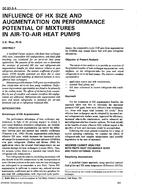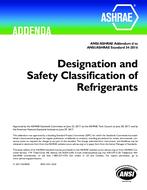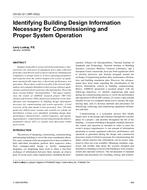Many combinations of refrigerants have been tested in an effort to improve the efficiency of residential heat pumps. Up to this point, there has been no systematic approach for determining which fluid pairs have the greatest potential for improving heat pump performance. The primary purpose of this work was to perform a comprehensive screening of refrigerant pairs which, through a shift in composition, could improve the performance of heat pump systems by modulating their capacity to better follow a building load. Secondary goals were to select a mixture with (1) a gliding temperature difference that matches that of the heat transfer fluid in both heat exchangers and (2) a higher capacity relative to R22 at low outdoor temperatures. The number of pure components was pared on the basis of boiling point, stability, ozone depletion potential, and toxicity. Pairs were then assembled from the pure components using the temperature glide (the constant-pressure temperature change that the fluid undergoes in the two-phase region as it passes through the heat exchanger) and the coefficient of performance to determine those pairs with the highest potential The conclusions were that mixtures of R32/R124, R32/R142b, R143a/R124, R143a/R142b, and R143a/C318 were the best candidates for accomplishing the project goals. Although the mixtures were tailored for residential heat pumps with an emphasis on capacity modulation, the screening process could be used for other refrigeration applications as well.
Citation: ASHRAE Transactions, vol. 95, pt. 1, Chicago 1989
Product Details
- Published:
- 1989
- Number of Pages:
- 13
- File Size:
- 1 file , 1.5 MB
- Product Code(s):
- D-23564


